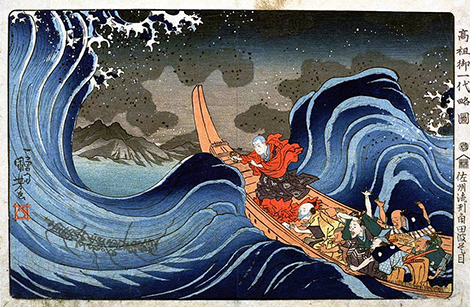
This article was published by Political Violence @ a Glance on 23 November 2016.
I have long been critical of those who think that NATO faces an existential crisis (see Wallace Thies for this debate). Much of this has been: what to do now that the main raison d’etre, the Soviet Union, is gone? The answer was very Keohane-ian – the institution was seen as too valuable for coordinating the security policies of the US, Canada, and most of Europe.
In the aftermath of the Soviet Union, NATO got involved in helping the countries of the former Warsaw Pact develop civilian control of the military (note that neither Hungary’s nor Poland’s march towards authoritarianism has involved the armed forces); try to and eventually manage the conflicts out of area (the former Yugoslavia); and fulfill the promise of Article V by helping to defend US airspace after 9/11 and then join the US in the Afghanistan effort. In much of this, there were moments of doubt – whether NATO would do what it was supposed to do. In these moments, countries kicked in enough effort regardless of how they felt about the actual operation because they wanted to preserve the alliance.
But now I am worried about the future of NATO. Why? Partly because Donald Trump campaigned with the slogan “America First,” which was also the slogan of isolationists before World War II. I found it strange that one of the consistent issues in the campaign was his criticism of NATO – that it did not seem to be an important issue for the American public. But it fits with Trump’s view of the world – that any fair bargain is not sufficiently exploitative. He is mercantilist not just in trade policy but in security.
Sure, lots of NATO discussions have centered around 2% of GDP and countries falling short, but no one there ever said: well, if you don’t pay your share, we may not help you. Perhaps Trump might be satisfied by the recent efforts by countries to increase their spending (Germany most obviously; Canada has not/is not likely to do so).
However, there is the Putin thing – that Trump may very well prioritize his relationship with Putin over the need to guarantee US commitments to the alliance. The combination of NATO criticism and Putin admiration is very disturbing. So, how might Trump destroy NATO?
The most obvious scenario is that Putin makes advances on the Baltics, the Baltic representatives at NATO try to get Article V invoked, and one of two things happens:
a) The US permanent representative (the US Ambassador to NATO) opposes the effort. NATO operates by consensus – there is no automatic invoking of A-5 – it requires a decision by the North Atlantic Council [NAC]. In the past, individual countries have registered their concerns but not have blocked action on such things as the Kosovo intervention. But one can imagine that the US rep puts up a fight so no NAC decision is reached. Then, the rest of Europe plus Canada will have to wonder what to do, what does NATO mean, if the most important member is not willing to allow the alliance to act.
b) NATO can come to a consensus, but US refuses to participate. Germany did that during the Libya effort, so this is not unprecedented…except for the US pulling such a move. What happens if the US does not help out?
Trump generates uncertainty – I have taken to calling him an uncertainty engine – and uncertainty is fatal for alliances. As Glenn Snyder and Patricia Weitsman argued, alliances are plagued by two forms of uncertainty: will my ally show up when I need it? Will an ally be so assured by its alliance that they act more aggressively? Trump raises big questions about whether the US would show up. And that can be fatal to the alliance.
Can Trump do this much damage in four years (maybe eight) to an alliance that has lasted for nearly 70 years? It depends on what happens. Putin has breaking NATO as a major foreign policy goal, so it is hard to imagine him not trying to put NATO to the test during Trump’s time in office. My guess is that Putin does something in the next couple of years to test NATO and test how pliant Trump is.
My best hope is that NATO is put on ice for four years – that the organization continues to function but is not asked to do too much. Any potential mission could turn into an existential crisis. I wouldn’t bet on this.
This piece originally appeared on Saideman’s Semi-Spew.
About the Author
Stephen Saideman holds the Paterson Chair in International Affairs at Carleton University’s Norman Paterson School of International Affairs. He has written The Ties That Divide: Ethnic Politics, Foreign Policy and International Conflict and For Kin or Country: Xenophobia, Nationalism and War (with R. William Ayres) and NATO in Afghanistan: Fighting Together, Fighting Alone (with David Auerswald), and other work on nationalism, ethnic conflict, civil war, and civil-military relations.
For more information on issues and events that shape our world, please visit our CSS Security Watch Series or browse our Publications.

